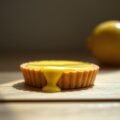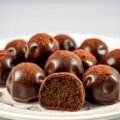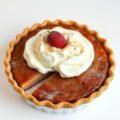Mary Berry’s Tea Bread is a delightful and simple British dessert that holds a special place in the hearts of many. Known for her easy-to-follow, yet delicious recipes, Mary Berry’s version of tea bread is a moist, fruity loaf that combines dried fruits, tea, and a touch of sweetness. It’s a comforting cake that’s perfect for afternoon tea, hence the name “Tea Bread”. The tea not only adds moisture but also infuses the bread with subtle flavor, making it the perfect companion to a hot cup of tea or coffee.
What makes this bread distinct is its texture-dense and rich from the dried fruits, but not heavy. The batter is made by soaking dried fruits like raisins, sultanas, and currants in strong tea, allowing the fruits to absorb the liquid and become plump and juicy. This process gives the bread its rich flavor and moistness. Unlike a traditional cake, it’s not overly sweet, but instead, it’s a lovely balance of sweetness from the dried fruits and a slight bitterness from the tea.
Mary Berry’s Tea Bread can be enjoyed for breakfast, as a snack, or as part of an afternoon tea spread. Its versatility and ease of preparation make it a staple in many households, especially for those who enjoy baking treats that are both comforting and nostalgic.
Mary Berry’s Tea Bread Recipe
Ingredients Needed
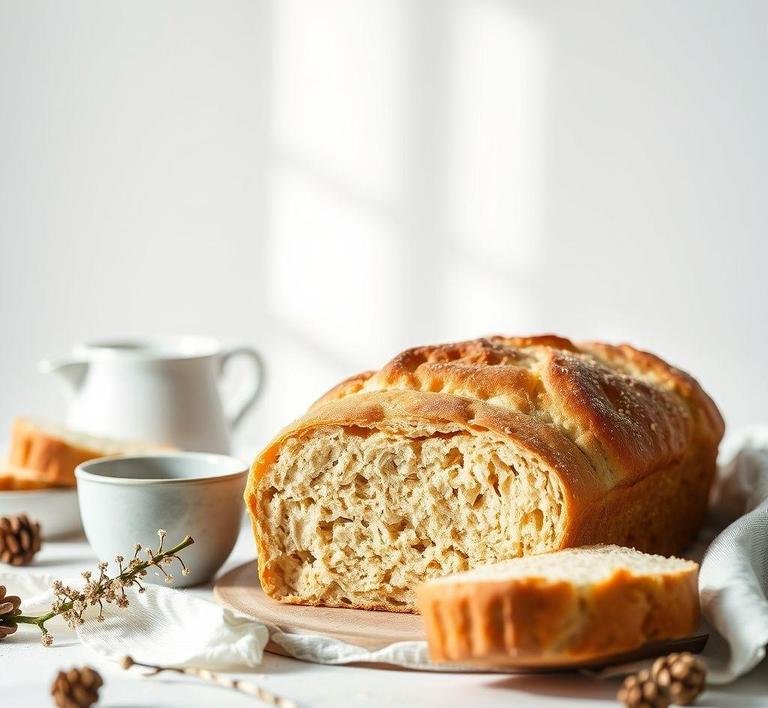
To make Mary Berry’s Tea Bread, you’ll need simple, everyday ingredients that you can easily find at any grocery store. Here’s a breakdown of the main components:
- Dried Fruit: Typically, a mix of sultanas, raisins, and currants is used, though you can adjust this depending on your preference. The dried fruit is the backbone of the flavor, providing both sweetness and texture.
- Strong Tea: A strong, brewed tea is the secret ingredient in this recipe. Most people opt for black tea, like English Breakfast, as it provides a rich, robust flavor that pairs beautifully with the dried fruits.
- Self-Raising Flour: This is essential to give the tea bread its soft, light crumb. Self-raising flour contains baking powder, so you don’t need to add any additional leavening agents.
- Sugar: A small amount of sugar is used to give the bread a subtle sweetness without overpowering the natural flavors of the dried fruit.
- Butter: Unsalted butter helps bind the ingredients together and contributes to the moistness of the bread. It also adds a slight richness.
- Eggs: Two large eggs are included to help provide structure to the bread, ensuring it holds together after baking.
- Baking Powder: Although self-raising flour already contains leavening agents, Mary Berry’s recipe calls for a tiny bit of additional baking powder to help the bread rise and become fluffy.
- A Pinch of Salt: Salt balances out the sweetness and enhances all the other flavors.
Equipment Needed
Mary Berry’s Tea Bread recipe requires very little in terms of specialized equipment, making it a perfect beginner’s recipe or for anyone who prefers to bake with minimal fuss. Here’s what you’ll need:
- Mixing Bowl: A large bowl for mixing your wet and dry ingredients together.
- Whisk or Fork: To whisk the eggs and combine them with the butter and sugar. This can be done with a hand whisk or even a fork if you don’t have one.
- Measuring Cups and Spoons: Accurate measurements are key to ensuring that the texture of your tea bread comes out just right, so make sure you have a set of measuring cups and spoons on hand.
- Baking Tin: A standard 2lb loaf tin works perfectly for this recipe. It allows the bread to bake evenly and gives you that classic loaf shape.
- Sieve: You may want to sieve the flour to make sure it’s light and free of lumps before adding it to the batter.
- Cooling Rack: Once your tea bread is baked, a cooling rack helps to cool it evenly and prevent it from becoming soggy on the bottom.
Instructions To Make Mary Berry’s Tea Bread
Making Mary Berry’s Tea Bread is a straightforward and enjoyable process. Here’s a step-by-step guide:
- Soak the Dried Fruit: Start by placing your dried fruits into a bowl. Pour over enough boiling hot tea to cover them completely, then set the mixture aside to soak for about an hour, or even longer if you have time. This helps to plump up the fruits and infuse them with the flavor of the tea.
- Prepare the Loaf Tin: Preheat your oven to 160°C (140°C fan oven) or 325°F (300°F fan oven). Grease and line a 2lb loaf tin with baking parchment or a loaf liner to prevent the bread from sticking.
- Mix the Wet Ingredients: In a separate bowl, whisk together the sugar and eggs until combined. Then, melt the butter (in the microwave or on the stove) and add it to the egg and sugar mixture.
- Combine with the Soaked Fruit: Once your dried fruit has soaked in the tea, stir it into the egg, sugar, and butter mixture. Ensure that all the fruit is evenly distributed.
- Add the Dry Ingredients: Sift in the self-raising flour, baking powder, and a pinch of salt into the wet ingredients. Mix well until the batter is smooth and lump-free.
- Pour into the Tin: Spoon the batter into your prepared loaf tin, spreading it out evenly with a spatula.
- Bake: Place the tin in the preheated oven and bake for about 1 hour to 1 hour 10 minutes, or until a skewer inserted into the center of the bread comes out clean.
- Cool: Remove the tea bread from the oven and allow it to cool in the tin for 10 minutes. Then, transfer it to a wire rack to cool completely.
Tips And Tricks
- Use Strong Tea: Don’t skimp on the strength of your tea. The stronger the tea, the more flavor it will infuse into the fruit and the bread itself.
- Soak the Fruit Overnight: If you have time, soaking the fruit overnight in the tea will deepen the flavor and give the bread even more moisture.
- Add a Splash of Liquor: For an extra layer of flavor, you can add a tablespoon of brandy, rum, or even whiskey to the soaking tea. This adds a subtle richness that pairs well with the dried fruit.
- Mix and Match the Dried Fruit: You can experiment with different types of dried fruit. Cranberries, apricots, or prunes can add new flavors and textures to the tea bread.
- Let it Rest: Tea bread often tastes better the day after baking, so let it rest for a few hours or even overnight before slicing. This allows the flavors to develop further.
- Check for Doneness Early: Oven temperatures can vary, so check your bread 5-10 minutes before the suggested baking time to prevent over-baking. A clean skewer is the best indicator that it’s done.
Mary Berry’s Tea Bread is a comforting, easy-to-make loaf that’s perfect for those who enjoy a fruity, subtly sweet treat with a cup of tea. The simplicity of the ingredients and the ease of preparation make this an ideal bake for beginners or anyone looking for a quick but satisfying snack. With the added bonus of being a great way to use up dried fruit, it’s a versatile recipe that you can adapt to your tastes. Whether you enjoy it fresh from the oven or allow it to sit and develop deeper flavors, Mary Berry’s Tea Bread is sure to become a go-to in your baking repertoire.
Easy Recipe Variations For Mary Berry’s Tea Bread
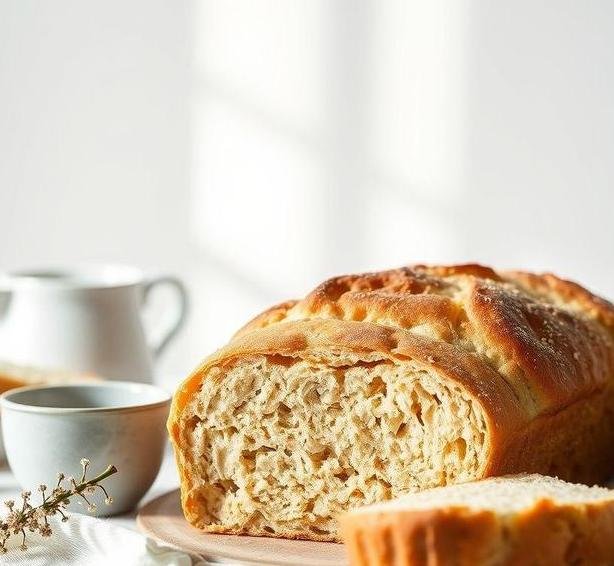
Mary Berry’s tea bread is a classic British treat that combines simplicity with rich, comforting flavor. Its moist texture, slightly spiced flavor, and subtle sweetness make it perfect for afternoon tea, snacks, or even breakfast. While the traditional recipe is a timeless favorite, there are many delightful variations you can try to tailor the bread to your preferences or make it a bit more exciting.
-
Fruit Variations:
One of the easiest ways to add a twist to Mary Berry’s tea bread is by experimenting with different fruits. While the classic version typically uses dried mixed fruit or raisins, you could easily swap these for other fruits to change the flavor profile.
- Cranberry and Orange Tea Bread: Add dried cranberries and a hint of orange zest to the mix. The tartness of the cranberries complements the sweet bread, and the citrusy notes from the orange elevate it.
- Apple and Cinnamon Tea Bread: Grate an apple into the batter and add a sprinkle of ground cinnamon. The apple adds moisture and sweetness, while the cinnamon brings a cozy warmth that is perfect for the colder months.
- Cherry and Almond Tea Bread: For a slightly more indulgent variation, try adding chopped glacé cherries and a handful of ground almonds. The cherries offer a juicy burst of flavor, while the almonds enhance the texture.
-
Nuts and Seeds:
Adding nuts or seeds can provide both texture and a deeper flavor. The mild, nutty crunch contrasts beautifully with the soft crumb of the bread.
- Walnut Tea Bread: Chopped walnuts are an excellent choice for those who enjoy a nutty flavor. They pair well with the fruit base and add a satisfying crunch.
- Poppy Seed and Lemon Tea Bread: For a more sophisticated variation, incorporate poppy seeds and a touch of lemon zest. The poppy seeds offer a delicate crunch, while the lemon adds a refreshing zing.
-
Spices:
While traditional tea bread uses cinnamon or mixed spice, adding other warming spices can make your bread even more enticing.
- Ginger and Nutmeg Tea Bread: Ground ginger and nutmeg can lend a spicier edge to the bread. The ginger adds warmth, while nutmeg introduces a subtle, aromatic note.
- Cloves and Allspice Tea Bread: For those who enjoy a more intense spice profile, a dash of ground cloves or allspice can enhance the flavor without overwhelming the fruit.
-
Dairy Alternatives:
For those who are lactose intolerant or prefer plant-based options, swapping dairy ingredients for alternatives is simple.
- Vegan Tea Bread: Replace the butter with plant-based margarine or coconut oil, and substitute the eggs with a flaxseed or chia egg (1 tablespoon of ground flaxseed mixed with 3 tablespoons of water). You can also use almond milk or oat milk in place of regular milk.
- Dairy-Free Tea Bread: Coconut milk or rice milk can replace regular milk, while dairy-free margarine can stand in for butter. This keeps the bread moist while accommodating dietary needs.
These variations showcase just how versatile Mary Berry’s tea bread recipe can be, making it easy to experiment with different flavors, textures, and dietary preferences.
Storing Leftovers
Mary Berry’s tea bread, when freshly baked, is an aromatic delight. But like many baked goods, you may find yourself with leftovers. Thankfully, tea bread keeps surprisingly well, so you can enjoy it for several days after baking. Here’s how to store your leftovers properly to maintain its freshness and flavor:
-
Room Temperature Storage:
If you plan on finishing the bread within a few days, the best way to store it is in an airtight container at room temperature. Make sure the tea bread has cooled completely before you store it to avoid condensation forming inside the container, which could make the bread soggy. Stored this way, it will stay fresh for about 3 to 4 days.
-
Refrigeration:
If you want to keep your tea bread for a longer period, you can store it in the fridge. Wrap it tightly in plastic wrap or aluminum foil and place it in an airtight container. The cooler temperature will help preserve its freshness, and it should last up to a week. However, be aware that refrigeration can slightly affect the texture, making it firmer.
-
Freezing Tea Bread:
Freezing is a fantastic option if you don’t anticipate finishing the bread within a week. Slice the bread into portions before freezing; this makes it easier to defrost just the amount you need. Wrap the slices tightly in plastic wrap and place them in a freezer bag or airtight container. Tea bread can be frozen for up to 3 months. When you’re ready to enjoy it, simply defrost at room temperature or toast slices directly from the freezer for a warm, comforting treat.
-
Reviving Leftovers:
If the bread has become a bit dry after being stored, don’t worry! You can easily bring back some of its moisture by gently reheating it. For a soft, warm slice, wrap the bread in foil and warm it in the oven at 300°F (150°C) for about 10 minutes. Alternatively, lightly toast individual slices for a crispy yet soft texture.
What To Eat With Mary Berry’s Tea Bread?
Mary Berry’s tea bread is a versatile treat that pairs beautifully with a wide variety of accompaniments. Whether you’re serving it for breakfast, tea time, or as an afternoon snack, there are plenty of options to enhance the experience:
-
Butter and Jam:
A simple and classic combination, butter adds a creamy richness to the sweet, moist tea bread, while a dollop of jam or marmalade offers a fruity contrast. You can use any jam you like, but strawberry, apricot, or orange marmalade are especially delightful.
-
Cheese:
For a more savory twist, try serving tea bread with a mild cheese. Soft cheeses like cream cheese or ricotta complement the sweetness of the bread without overwhelming it. For a more indulgent pairing, try a creamy brie or a tangy goat cheese, both of which offer a rich contrast to the bread’s texture.
-
Whipped Cream or Clotted Cream:
If you’re enjoying the bread as part of an afternoon tea, serve it with a generous dollop of whipped cream or clotted cream. The rich, velvety cream balances the sweetness of the bread perfectly and adds a luxurious touch.
-
Fruit and Nuts:
A side of fresh fruit-think berries, apple slices, or grapes-can be the perfect way to refresh the palate. The natural sweetness of the fruit complements the flavors of the tea bread, and adding a handful of nuts, like almonds or hazelnuts, gives the meal some crunch.
-
Tea or Coffee:
Of course, no tea bread is complete without a hot beverage to enjoy with it. A strong cup of English Breakfast tea, Earl Grey, or a light green tea works beautifully with the bread’s subtle sweetness. If you prefer coffee, a cappuccino or an espresso pairs equally well, balancing the rich, fruity flavor of the bread.
Conclusion
Mary Berry’s tea bread is a beloved classic that never fails to delight. Whether you stick with the traditional recipe or experiment with one of the many variations, this bread offers endless possibilities for customization. From fruit and spice combinations to alternative dairy options, there’s a version of tea bread for everyone. It’s not only easy to bake but also simple to store, making it a great option for meal prep or sharing with loved ones. Paired with butter, jam, cheese, or your favorite drink, tea bread is the ultimate comfort food that fits any occasion. So whether you’re baking it for a special gathering or just as a treat for yourself, this easy-to-make bread will surely become a go-to favorite in your baking repertoire.
FAQs
What Ingredients Do I Need For Mary Berry’s Tea Bread?
To make Mary Berry’s tea bread, you’ll need the following ingredients: 225g dried mixed fruit (such as sultanas, raisins, or currants), 300ml strong black tea (brewed and cooled), 1 tsp baking soda, 150g self-raising flour, 1 tbsp honey or golden syrup, 50g brown sugar, and 1 beaten egg. The recipe is simple and focuses on natural sweetness from the dried fruit and a subtle flavor from the tea.
How Long Should I Bake Mary Berry’s Tea Bread?
Mary Berry’s tea bread requires a baking time of about 1 hour to 1 hour 15 minutes at 160°C (140°C fan), or 325°F. It’s important to check the bread with a skewer to ensure it comes out clean before removing it from the oven. If the top is browning too quickly, you can cover it with foil to prevent it from burning while the inside continues to cook.
Can I Freeze Mary Berry’s Tea Bread?
Yes, Mary Berry’s tea bread can be frozen! After baking, allow the bread to cool completely. Wrap it tightly in cling film or foil and then place it in an airtight container or freezer bag. It can be stored in the freezer for up to 3 months. When ready to eat, simply defrost at room temperature or gently warm it in the oven.
